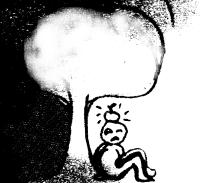Article,
Trapping of excitons at chemical defects in polyethylene
The Journal of chemical physics, 121 (13): 6478--6484 (2004)
Abstract
In a previous paper we studied an injected electron-hole pair in crystalline polyethylene (PE) and found that the exciton becomes weakly self-trapped in a narrow interchain pocket comprised between two gauche defects. Despite the large energy stored in the trapped excitation, there did not appear to be a direct nonradiative channel for electron-hole recombination. Actual polyethylene systems of practical use are, however, neither crystalline nor pure. To understand the fate of an electron-hole pair in the impure case, we studied by ab initio simulations the evolution of an exciton trapped on three common chemical defects found in polyethylene: a grafted carbonyl (C=O); an intrachain vinyl group (C=C); a grafted carboxyl (COOH). Ab initio simulations lead to predict three different outcomes: trapping, nonradiative recombination, and homolitic bond-breaking, respectively. This suggests that extrinsic self-trapping of electron-hole pairs over chemical defects inside the quasicrystalline fraction of PE could be relevant for electrical damage in high-voltage cables.
